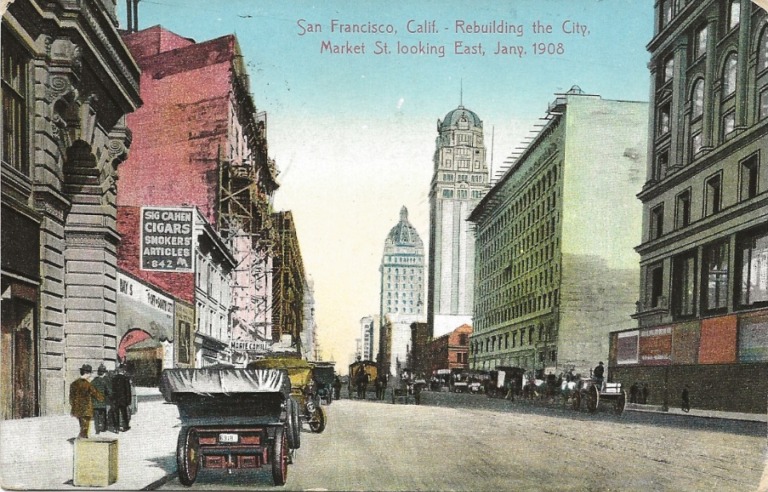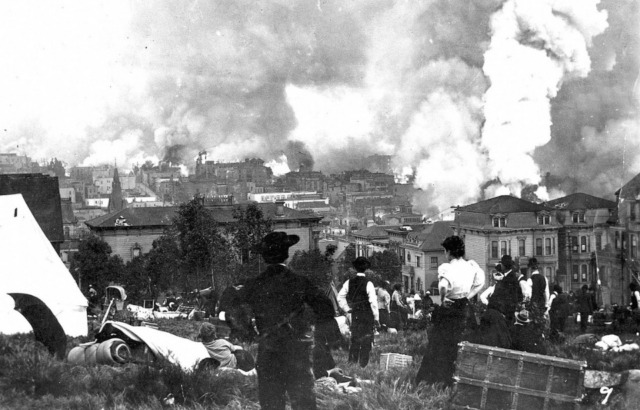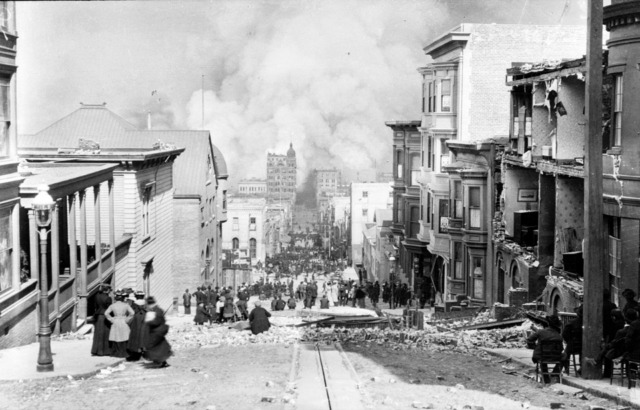
Shortly after five in the morning on April 18, 1906, San Francisco, California, was struck by an earthquake. While the seismic event lasted less than a minute, it caused significant damage. Four days before this catastrophic event, on April 14th, photographers shot moving picture footage of the city, showing daily life in San Francisco. Recently, a video restorer called NASS remastered the footage, allowing viewers to see San Francisco as it was at the turn of the last century.
A Trip Down Market Street
The original moving picture was called A Trip Down Market Street. The video is shot in a point-of-view style from the front of a cable car. The footage was taken on Market Street, traveling from 8th Street toward the cable car turnaround at the Ferry Building.
The footage gives the viewer a front-row seat into life in 1906 San Francisco. It shows a busy street full of streetcars, motorcars, horses, and carriages. The video also shows people darting in between the traffic crisscrossing the street.
The restoration included increasing the frames per second from 15 to 60 and correcting the speed to be more natural and realistic, while the image was also upgraded to a higher quality with a sharper focus and brightness. The footage was further restored with AI-generated colorization and sounds, including the clip-clop of horses’ hooves, the ringing of the streetcar bells, and the revving of the car’s engines.
The footage was shot by Harry J. Miles with a hand-cranked Bell & Howell camera. The negative was taken to the Miles’ New York office; however, after hearing the news of the earthquake, it was sent back to San Francisco. The original footage is now stored in the city’s Prelinger Archives.
1906 San Francisco earthquake

The 1906 San Francisco earthquake was a devastating force that left an indelible mark on history. With its epicenter located near the San Andreas Fault, the earthquake’s magnitude of 7.9 on the Richter scale unleashed a relentless barrage of destruction, shaking the region for nearly a minute.
The aftermath of the earthquake was marked by a series of fires that ravaged the cityscape, exacerbated by ruptured gas lines and broken water mains that hindered firefighting efforts. Over the course of three days, these fires engulfed approximately 80 percent of San Francisco, leaving in their wake a landscape of charred ruins and smoldering remnants.
The structural devastation caused by the earthquake was staggering, as buildings, roads, and infrastructure crumbled under the immense pressure of the seismic forces. Iconic structures, including City Hall, bore the brunt of the destruction, collapsing or sustaining severe damage that altered the city’s skyline forever.

Upwards of 3,000 lives were lost, and countless others suffered injuries. Amid the destruction, hundreds of thousands of people were displaced from their homes.
The earthquake’s profound impact extended far beyond its immediate aftermath. The catastrophe prompted a comprehensive reevaluation of urban planning and architectural practices, spurring the implementation of stringent building codes, innovative zoning regulations, and new construction designs aimed at bolstering structures against the perils of future seismic events.
